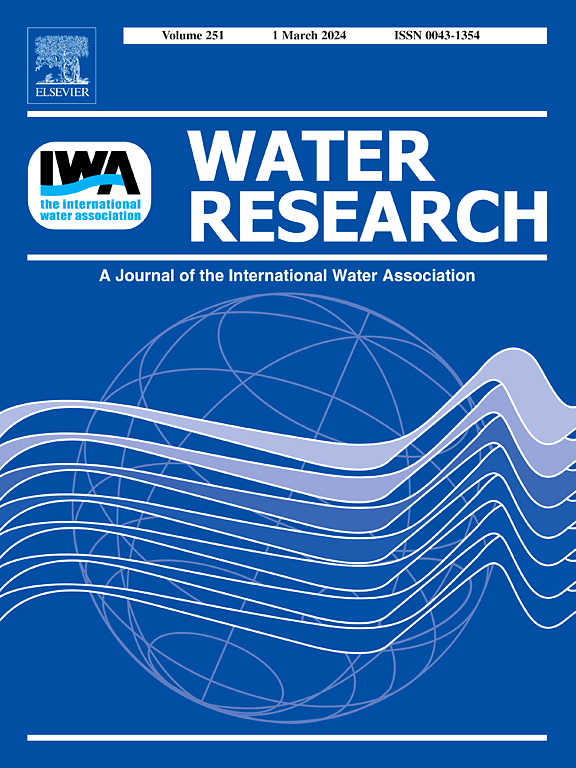Advancing aquatic ecological risk assessment of imidacloprid in global surface water with mesocosm-based thresholds
IF 11.4
1区 环境科学与生态学
Q1 ENGINEERING, ENVIRONMENTAL
引用次数: 0
Abstract
Aquatic ecological risk posed by neonicotinoids has become a growing concern due to their widespread use and documented environmental impacts. However, current risk assessments predominantly rely on laboratory-based toxicity data, which often lack ecological relevance and may introduce substantial biases. In this study, we addressed a critical knowledge gap in neonicotinoid risk assessment by establishing the first global-scale comparison between traditional laboratory-based and ecologically realistic mesocosm-derived toxicity thresholds. Analysis of literature-reported concentrations revealed significant regional variations in imidacloprid pollution at a global scale, with the highest median concentrations detected in Oceania, followed by Asia, Africa, America, and Europe, although extreme concentrations were observed in America. The mesocosm-based hazard concentration for 5% of species (HC5) was determined to be 0.013 μg/L, which was significantly lower than the laboratory-based HC5 of 0.086 μg/L. Risk assessment using the laboratory-based threshold identified 1.2% of the 1,378 freshwater samples as high risk (risk quotient, RQ>10) and 7.1% as medium risk (1<RQ<10), with majority of sites at risk located in American. In contrast, applying the mesocosm-based threshold revealed a substantial increase in risk, with 5% of sites classified as high risk and 32% as medium risk. In addition, the dominant medium-risk sites shifted from America to Asia and Europe. These findings underscore that the laboratory-based threshold significantly underestimates aquatic ecological risk of imidacloprid on a large scale, especially in Asia. Alternatively, the mesocosm-based threshold provides a more ecologically relevant assessment of risks in real-world aquatic environments. The present study highlights the critical need for incorporating ecologically relevant toxicity data into global risk assessments to better inform regulatory decisions and environmental protection strategies.

基于中生态阈值的吡虫啉全球地表水水生生态风险评价
由于新烟碱类化合物的广泛使用和有记录的环境影响,其造成的水生生态风险日益受到关注。然而,目前的风险评估主要依赖于基于实验室的毒性数据,这些数据往往缺乏生态学相关性,并可能引入重大偏差。在这项研究中,我们通过建立传统的基于实验室的毒性阈值与生态现实的中生态衍生毒性阈值之间的第一个全球范围的比较,解决了新烟碱类风险评估的关键知识缺口。对文献报告的浓度分析显示,吡虫啉污染在全球范围内存在显著的区域差异,大洋洲检测到的中位数浓度最高,其次是亚洲、非洲、美洲和欧洲,尽管在美洲观察到极端浓度。其中,5%的物种(HC5)的中环境危害浓度为0.013 μg/L,显著低于实验室HC5的0.086 μg/L。使用基于实验室的阈值进行风险评估,确定1,378个淡水样本中1.2%为高风险(风险商,RQ>10), 7.1%为中等风险(1<RQ<10),大多数风险地点位于美国。相比之下,应用基于中观世界的阈值显示风险大幅增加,5%的站点被分类为高风险,32%被分类为中等风险。此外,占主导地位的中等风险地点从美洲转移到亚洲和欧洲。这些发现强调,实验室阈值显著低估了吡虫啉在大范围内的水生生态风险,特别是在亚洲。另外,基于中观世界的阈值提供了对现实水生环境中风险的更具有生态相关性的评估。本研究强调,迫切需要将生态相关的毒性数据纳入全球风险评估,以便更好地为监管决策和环境保护战略提供信息。
本文章由计算机程序翻译,如有差异,请以英文原文为准。
求助全文
约1分钟内获得全文
求助全文
来源期刊

Water Research
环境科学-工程:环境
CiteScore
20.80
自引率
9.40%
发文量
1307
审稿时长
38 days
期刊介绍:
Water Research, along with its open access companion journal Water Research X, serves as a platform for publishing original research papers covering various aspects of the science and technology related to the anthropogenic water cycle, water quality, and its management worldwide. The audience targeted by the journal comprises biologists, chemical engineers, chemists, civil engineers, environmental engineers, limnologists, and microbiologists. The scope of the journal include:
•Treatment processes for water and wastewaters (municipal, agricultural, industrial, and on-site treatment), including resource recovery and residuals management;
•Urban hydrology including sewer systems, stormwater management, and green infrastructure;
•Drinking water treatment and distribution;
•Potable and non-potable water reuse;
•Sanitation, public health, and risk assessment;
•Anaerobic digestion, solid and hazardous waste management, including source characterization and the effects and control of leachates and gaseous emissions;
•Contaminants (chemical, microbial, anthropogenic particles such as nanoparticles or microplastics) and related water quality sensing, monitoring, fate, and assessment;
•Anthropogenic impacts on inland, tidal, coastal and urban waters, focusing on surface and ground waters, and point and non-point sources of pollution;
•Environmental restoration, linked to surface water, groundwater and groundwater remediation;
•Analysis of the interfaces between sediments and water, and between water and atmosphere, focusing specifically on anthropogenic impacts;
•Mathematical modelling, systems analysis, machine learning, and beneficial use of big data related to the anthropogenic water cycle;
•Socio-economic, policy, and regulations studies.
 求助内容:
求助内容: 应助结果提醒方式:
应助结果提醒方式:


